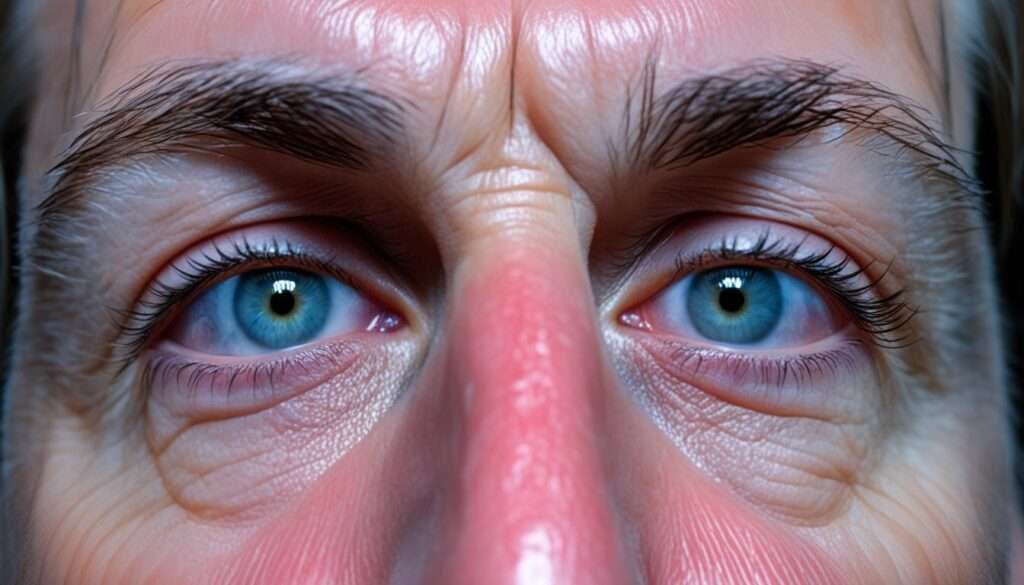Benign Essential Blepharospasm (BEB) is a neurological disorder that causes involuntary twitching and spasms of the eyelids. While it is not life-threatening, it can significantly impact daily life and activities. This comprehensive overview by Dr. Chandril Chugh covers everything you need to know about Benign Essential Blepharospasm—from symptoms. It causes effective treatments and management strategies.
What is Benign Essential Blepharospasm?
A benign Essential Blepharospasm is a form of focal dystonia affecting the muscles around the eyes, leading to uncontrollable blinking and eyelid closure. It can interfere with vision and make daily activities challenging. Understanding the condition's symptoms and management is crucial for improving quality of life.
Symptoms of Benign Essential Blepharospasm
Identifying the symptoms of Benign Essential Blepharospasm is crucial in seeking appropriate treatment. The primary symptoms include:
1. Involuntary Eye Movements
Excessive Blinking: Frequent and uncontrollable blinking is one of the most common symptoms.
Eyelid Spasms: Involuntary spasms cause the eyelids to close partially or entirely, interfering with vision.
2. Light Sensitivity
Photophobia: Increased sensitivity to light, which can exacerbate spasms and discomfort.
Eye Irritation: Discomfort and irritation in bright environments, leading to further blinking and spasms.
3. Visual Disturbances
Temporary Blindness: Severe spasms may cause temporary inability to open the eyes, resulting in functional blindness.
Blurred Vision: Intermittent blurred vision due to frequent eyelid movements.
4. Emotional Impact
Anxiety and Stress: The unpredictability of symptoms can lead to significant anxiety and stress, affecting overall emotional well-being.
Social Withdrawal: Individuals may avoid social interactions due to the visible nature of the condition.
For a detailed list of symptoms and further information, visit Dr. Chandril Chugh's page on Benign Essential Blepharospasm.
Causes and Risk Factors
While the exact cause of Benign Essential Blepharospasm is not fully understood, several factors may contribute to its development:
Genetic Factors: A family history of dystonia or related neurological disorders may increase the risk.
Neurological Abnormalities: Dysfunction in the brain's basal ganglia, which controls muscle movements, may play a role.
Environmental Triggers: Bright lights, stress, fatigue, and specific medications can trigger or worsen symptoms.
Chemical Imbalances: Dysregulation of neurotransmitters like dopamine is essential for muscle control.
Diagnosing Benign Essential Blepharospasm
Diagnosis typically involves a comprehensive clinical evaluation to rule out other conditions:
Neurological Examination: Assessment of motor functions, muscle control, and reflexes to identify symptoms consistent with BEB.
Imaging Tests: MRI or CT scans to exclude other potential neurological or structural causes.
Treatment Options for Benign Essential Blepharospasm
Effective management of Benign Essential Blepharospasm often requires a combination of treatments:
1. Medical Treatments
Botulinum Toxin Injections: Regular injections weaken overactive muscles, reduce spasms, and improve symptom control. This is one of the most effective treatments for BEB.
Medication: Drugs such as muscle relaxants or anticholinergics can be used to help manage symptoms.
2. Surgical Treatments
Myectomy: Surgical removal of some eyelid muscles in severe cases where other treatments are ineffective.
Neurectomy: Surgical cutting of specific nerves to reduce muscle contractions and improve eyelid function.
3. Supportive Therapies
Physical Therapy: Exercises to strengthen surrounding muscles and improve motor control.
Occupational Therapy: Techniques to help adapt daily activities and enhance quality of life.
For more detailed treatment options and expert insights, visit Dr. Chandril Chugh's page on Benign Essential Blepharospasm.
Self-Care Strategies for Managing Benign Essential Blepharospasm
Incorporating self-care practices can help manage symptoms effectively:
1. Stress Management
Practicing relaxation techniques such as deep breathing, meditation, or yoga can help manage stress, which can trigger symptoms.
2. Avoid Environmental Triggers
Identify and avoid triggers like bright lights, screen glare, and caffeine that can exacerbate symptoms.
3. Use Protective Eyewear
Wear sunglasses to reduce light sensitivity and protect your eyes from bright light exposure.
4. Maintain Good Hydration
Drinking plenty of water keeps your eyes and body hydrated, which can help reduce irritation and spasms.
5. Ensure Adequate Sleep
Follow good sleep hygiene practices to get sufficient restful sleep each night, preventing fatigue-related worsening of symptoms.
Support and Resources
Living with Benign Essential Blepharospasm can be challenging, but support is available:
Support Groups: Join support groups for individuals with BEB to share experiences and coping strategies.
Counseling Services: Seek counseling to manage the emotional impact of living with BEB.
Conclusion
This Overview of Benign Essential Blepharospasm by Dr. Chandril Chugh provides a comprehensive look at the symptoms, causes, and treatment options for this condition. Early diagnosis and effective management can significantly improve the quality of life for those affected. For more expert insights and detailed information, visit Dr. Chandril Chugh's page on Benign Essential Blepharospasm.




